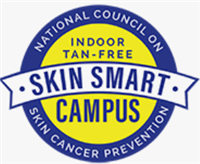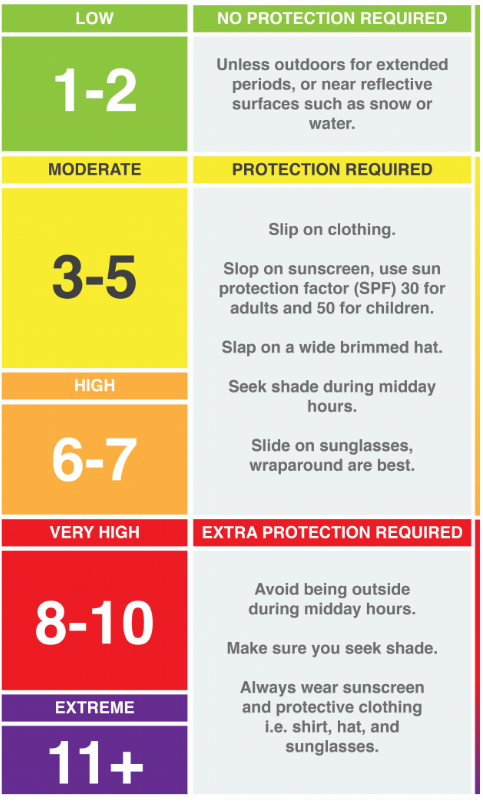Skin Smart Campus
LSU Health New Orleans has been recognized as a Skin Smart Campus by The National Council on Skin Cancer Prevention. The Skin Smart Campus initiative adds to our overall campus wellness by ensuring the well-being of our students, faculty, and staff by providing a safe and healthy learning and living environment on and off campus. The overarching goal of the Skin Smart Campus initiative is to increase awareness of skin cancer and to promote strategies for risk reductions.
As another part of this initiative, LSUHSC New Orleans is also committed to keeping indoor tanning beds out of our facilities, given the strong association between increased risk of skin cancer and indoor tanning use. Numerous studies have found that skin cancer is the most common type of cancer in the United States, with melanoma as one of the most common cancers diagnosed among young adults. The use of indoor tanning facilities before the age of 35 increases the risk for melanoma by 75 percent.

Sun Screen Dispenser Locations
-
-
-
- Wellness Center on the 3rd floor in the CALS building
- Student Health on the 3rd floor in the Seton building
-
-
Skin cancer is the most common cancer in the United States:
-
The two most common skin cancers (basal cell and squamous cell carcinomas) are highly curable but can be disfiguring and costly
-
Melanoma (the third most common skin cancer) may be deadly
-
Ultraviolet (UV) radiation from the sun or from a tanning device can cause dangerous, lasting damage to your skin
General risk factors include:
-
Light skin, or skin that burns, freckles, or reddens easily
-
Skin of all colors can get skin cancer
-
Large number of moles
-
Personal or family history of skin cancer
-
History of sun exposure
-
History of sunburns, especially in early life
-
History of indoor tanning
-
Average tanning bed gives off 2 to 10 times more UVA radiation than the sun
-
Using tanning beds before the age of 35 increases a person's risk for developing melanoma by 75%
-
Skin of Color – includes people of African, Asian, Latino, Mediterranean, Middle Eastern, and Native American descent:
-
Even if you have a darker skin tone, always tan or rarely burn, you can still get skin cancer
-
Skin cancer is often diagnosed later in people of color, making it harder to treat
-
Melanoma in people of color most often occurs on the palms of the hands, soles of the feet, under the nail (subungual) and in the nail areas
-
No matter your skin tone, UV radiation can lead to skin damage, premature aging, and hyperpigmentation. Protecting your skin is important!
The majority of skin cancers are caused by exposure to ultraviolet (UV) light and can be prevented with sun safety practices:
-
Seeking shade
-
Find shade under a dense tree canopy, shade sail, or pavilion
-
Carry a sun umbrella for personal shade
-
Use a pop-up UV shelter when at the beach or park
-
Whenever possible, stay out of the sun from 10 AM - 4 PM when UV radiation is the strongest
-
-
Wearing
-
Sunscreen
-
Broad spectrum UVA and UVB, SPF 30 or higher
-
Reapplication is necessary every 2 hours and after swimming, sweating, or toweling off
-
Most people do not put on enough sunscreen–aim for one ounce, which is about a shot glass or palmful
-
-
Protective clothing
-
Long sleeves/pants with a dense weave or built in UPF
-
Wide-brimmed hat
-
Closed-toe shoes and socks that cover the ankles
-
-
Sunglasses
-
Choose sunglasses with a UV protective coating
-
Wearing sunglasses helps protect the delicate skin around our eyes
-
UV rays can also increase risk of cataracts & macular degeneration–it makes sense to protect your eyes
-
-
The ABCDEs of Melanoma:
Know before you go! Check the UV index before you head outside. Dermatologists recommend using sun protective clothing, wide brimmed hats, sunglasses, and sunscreen when the UV index is 3 and above. As levels approach 6 and above, it's best to limit your time in the sun.
If you have questions about the Skin Smart Campus initiative, contact Shivani Jain at sjain7@lsuhsc.edu



